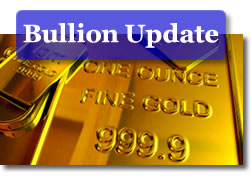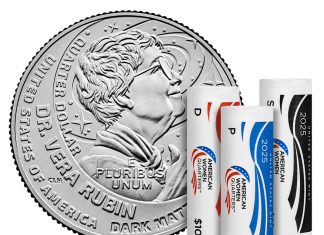 Good Morning,
Good Morning,
Livin’ in the USA cost less for a third consecutive month according to estimates offered by most economists surveyed by Bloomberg News. The drop in inflation underscores the reluctance of consumers to do what they do best as still-weak employment conditions continue to undermine their collective sentiment. Today’s CPI report is expected to indicate a gain of only 1.2% for the year ending in June.
That’s a figure that represents nearly half of the inflation level recorded in the May-to-May period. Thus we find a Fed that talks about something that was only last heard in Japan in recent history: "desirable levels of inflation." The Fed ‘desires’ to keep long-term inflation trends between 1.7 and 2 percent. Livin’ in the USA therefore –for the time being-implies livin’ in the land of bargains, despite the slightly more elevated that expected core CPI data.
Meanwhile, livin’ in the Old World became a tad more reassuring over the past month as the credit storm appears to have run out of the scary lightning and thunder found in news headlines. The head of the IMF this morning opined that the European bank stress tests will reveal that most of the 91 institutions to be hooked up to the testing apparatus will show a healthy enough state of fitness to be declared ‘sound.’
While some smaller banks may have to embark on an exercise program involving the shoveling of additional capital onto their balance sheets, the consensus is that the tests will show that fear was the only thing to be afraid of when diagnoses of imminent flatlining were being doled out by the day during the last quarter.
Also during the last quarter, gold –in terms of euros per ounce-may have just put in a top. This, according to Commerzbank metals analysts who live and breathe gold charts. Technical analyst Karen Jones opines that-given the yellow metal’s breach of the 55-day moving average for the first time in one year- gold may have seen its high at the 1050 euro/ounce level on June 8.
Having broken under the 975 euro/ounce level, the metal is poised to spend many a fortnight under the round 1000 euro figure. However, so long as it remains above 935 euros/ounce, bullion is seen as remaining in a bullish posture, according to Commerzbank’s analyst.
New York spot gold dealing opened with a threat to breach a round number of its own; that of the $1,200.00 level. Weakness in gold was manifest well before the market opened for the final session of the week.
The metal sold off fairly swiftly at the open, losing $6.60 to start the session at $1201.80 the ounce. This, despite a further slippage in the US dollar on the trade-weighted index (to 82.16) and against a euro that showed a $1.30 print for the first time in many moons.
Silver started Friday’s session with a 12-cent drop, quoted at $18.21 per ounce. More price damage was on tap in the noble metals as well. Platinum fell $9 to open at $1519.00 per ounce, while palladium was off by $6 at the start of the session, quoted at $460.00 the troy ounce. Rhodium continued steady at $2530.00 per ounce.
Not much to report in automotive land this morning, aside from the fact that US carmakers continue to show better and better scores when it comes to the quality of that which they produce, and that Toyota (unsurprisingly) has determined that most unintended acceleration episodes in its vehicles were in fact episodes of…driver error, just like those reported in the good old days when it was thought that all Audis were possessed by the runaway demon.
Following the confirmation that inflation is indeed wilting faster than the flora in many a park during this heat wave, the metals’ complex took a further liquidation hit. Gold fell to well under the $1200 mark, losing some $19 and was seen even breaking the $1190 level. The expected support at $1185.00-$1190.00 better materialize, and fast –given what has been seen thus far on this Friday morning. Silver lost an additional 30 cents to come to down to the $17.91 per ounce price level. Platinum added another $11 to its opening losses and touched $1517.00 per ounce. The dollar stayed down along with Treasurys following the tame inflation data.
As has been said in these columns on previous occasions, the inflation that the gold market appeared to be factoring in during the past nine months has turned out to be little more than a figment of someone’s imagination. Naturally, we will be told not to put any faith in the official numbers because only ‘the Shadow knows…’ what the real figures are. Dis-inflation? Deflation? Take your pick; the semantics are moot as the one label that stubbornly refuses to be applied and stick to current conditions, is that of ‘inflation.’ Ask the markets (with the exception of gold at the moment).
Meanwhile, players still at work today (and there are not too many we found when calling various desks) will also focus on the (unsurprising) Goldman settlement with the SEC and the success of BP in capping the nearly 90-day old oil leak in the Gulf. BofA earnings ($3 billion in Q2) along with those reported by GE failed to lift Dow futures for the time being. Overnight, the Nikkei average lost more than 277 points.
Closing out today’s roundup, a Motley Fool blog that looks at history (some 210 years of it) and gold’s value. What is cheap? What is expensive? You tell us. Actually, let "Checklist34" tell us. It’s every bit as worthy of attention as the 40 forecasts for multi-thousand-dollar-gold mentioned in yesterday’s post.
"From 1802-1970ish, gold was worth (data from Dreman’s “Contrarian Investment Strategies”) about a dollar, varying a bit… In the ’70’s gold spiked dramatically to about $5-6 (eyeballing the graph) in the great gold bubble that peaked in 1980. In reality, the actual peak of the spike was probably close to $10 or maybe even more. But the chart presented by Dreman is a 200 year chart, and as such the spike is compressed.
By 1996 gold had fallen back to roughly $1. But it continued down from there… bottoming at 50-60 cents in the early 21st century. At this point in time gold was cheap like stocks were cheap in March 2009 or 1932. Extremely cheap relative to the historical trend, extremely.
In the time since then, gold has gone up about 5 times, outpacing everything, including inflation. Inflation in the last decade was about 28% (from a table I just Googled) so a $1.25 in 2000 in about $1 today. But gold, at 50-60 cents in 2000, is $2-2.50 today.
So instead of being for sale at a 40-50% discount from the historical trend, gold is for sale at a PREMIUM of 100%+. That is beyond the premium on the S&P 500 at the peak in 2000 although probably not yet at the premium applied to the Nasdaq at the 2000 peak. A historical premium, although nowhere near the premium that existed in 1980."
Check, please.
Happy Trading. But not over the weekend.
Jon Nadler
Senior Analyst
Kitco Metals Inc.
North America
Original article link: Just Insert/Recycle Yesterday’s Title [Here]
www.kitco.comand www.kitco.cnBlog: http://www.kitco.com/ind/index.html#nadler
Check sister site to CoinNews and its US Inflation Calculator which easily finds how the buying power of the dollar has changed from 1913-2009.










